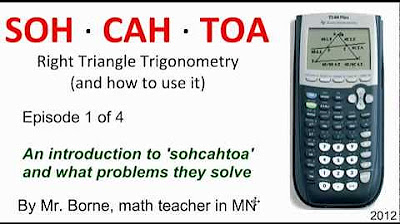Power Triangle and Impedance Triangle
Summary
TLDRThis video is part of the Network18 lecture series and focuses on explaining the concept of the power triangle and impedance triangle in electrical engineering. It covers the calculation of real, reactive, and apparent power, emphasizing the importance of understanding these elements for power factor correction and efficiency in AC circuits. The lecturer discusses how voltage, current, and resistance relate to the power triangle, and provides clear examples to help students grasp these concepts. The video encourages viewers to subscribe for more educational content on engineering topics.
Takeaways
- 🔌 Explanation of the power triangle concept, emphasizing its relevance in electrical engineering.
- ⚡ The video introduces both power and impedance triangles and compares their uses in understanding power relationships.
- 📐 Power triangle represents real power, reactive power, and apparent power, crucial for power calculation.
- ⚙️ Focus on the relationship between voltage, current, and their representations within the power triangle.
- 📉 The importance of understanding the angles between components (resistive, inductive, and capacitive) is highlighted.
- 📊 The concept of power factor, including how it relates to real and reactive power, is explained in detail.
- 🛠 Students are encouraged to focus on power factor corrections to improve efficiency in AC circuits.
- 🔧 Explanation of inductance, capacitance, and resistance in the context of AC circuits and their impact on power.
- 📚 Emphasis on learning and solving problems involving power triangles and power factors with real-world examples.
- 💡 The video encourages viewers to subscribe for future updates and further insights into power-related topics.
Q & A
What is a power triangle?
-A power triangle is a graphical representation used to show the relationship between real power, reactive power, and apparent power in an AC circuit. It helps in understanding how these different types of power interact in electrical systems.
What are the key components of a power triangle?
-The key components of a power triangle are real power (P), reactive power (Q), and apparent power (S). Real power is the actual power consumed, reactive power is the power stored and released by inductive or capacitive elements, and apparent power is the vector sum of both.
Why is understanding the power triangle important?
-Understanding the power triangle is crucial for power calculations and efficiency in electrical systems. It helps in calculating the power factor, which is key to minimizing losses and ensuring the proper operation of equipment.
What is reactive power and why does it matter?
-Reactive power is the power that oscillates between the source and the reactive components (inductors or capacitors) in an AC circuit. It doesn't perform any useful work but is essential for maintaining voltage levels and the proper functioning of the electrical grid.
How is the power factor related to the power triangle?
-The power factor is the cosine of the angle between the real power and apparent power in the power triangle. It indicates the efficiency of power usage in a system, with a higher power factor signifying more efficient power consumption.
What is the significance of real power in the power triangle?
-Real power, represented as P in the power triangle, is the actual power that performs useful work in an electrical circuit. It is measured in watts (W) and is the portion of power that is consumed by resistive components.
What role does the angle in the power triangle play?
-The angle in the power triangle represents the phase difference between the voltage and current. This phase difference determines the power factor and the proportion of real and reactive power in the system.
How can you improve the power factor in an electrical system?
-The power factor can be improved by reducing the reactive power through the use of capacitors or inductors, which compensate for the reactive components. This leads to a more efficient system with less energy wasted.
What is apparent power and how is it calculated?
-Apparent power, represented as S, is the total power flowing in the circuit. It is the vector sum of real power and reactive power and is calculated using the formula: S = √(P² + Q²). Apparent power is measured in volt-amperes (VA).
What are the implications of a low power factor in a system?
-A low power factor indicates that more power is being wasted in the form of reactive power. This results in inefficient energy use, higher electricity bills, and potential overloading of electrical infrastructure.
Outlines

Cette section est réservée aux utilisateurs payants. Améliorez votre compte pour accéder à cette section.
Améliorer maintenantMindmap

Cette section est réservée aux utilisateurs payants. Améliorez votre compte pour accéder à cette section.
Améliorer maintenantKeywords

Cette section est réservée aux utilisateurs payants. Améliorez votre compte pour accéder à cette section.
Améliorer maintenantHighlights

Cette section est réservée aux utilisateurs payants. Améliorez votre compte pour accéder à cette section.
Améliorer maintenantTranscripts

Cette section est réservée aux utilisateurs payants. Améliorez votre compte pour accéder à cette section.
Améliorer maintenantVoir Plus de Vidéos Connexes

Network Theory Introduction | Synthesis of Circuit | Difference in between Network and Circuit

Complex Power || Apparent Power || Real || Example 11.11 || Practice Problem 11.11 || ENA 11.6(E)

What is Apparent Power ? || Example & Practice11.9 || Example & Practice 11.10 || ENA 11.5(English)

AC Through Series RL Circuit - AC Circuits - Basic Electrical Engineering

¿Qué son las potencias Activa, Reactiva y Aparente? ⚡ Triángulo de Potencias

SOHCAHTOA using the TI-84 Plus
5.0 / 5 (0 votes)
